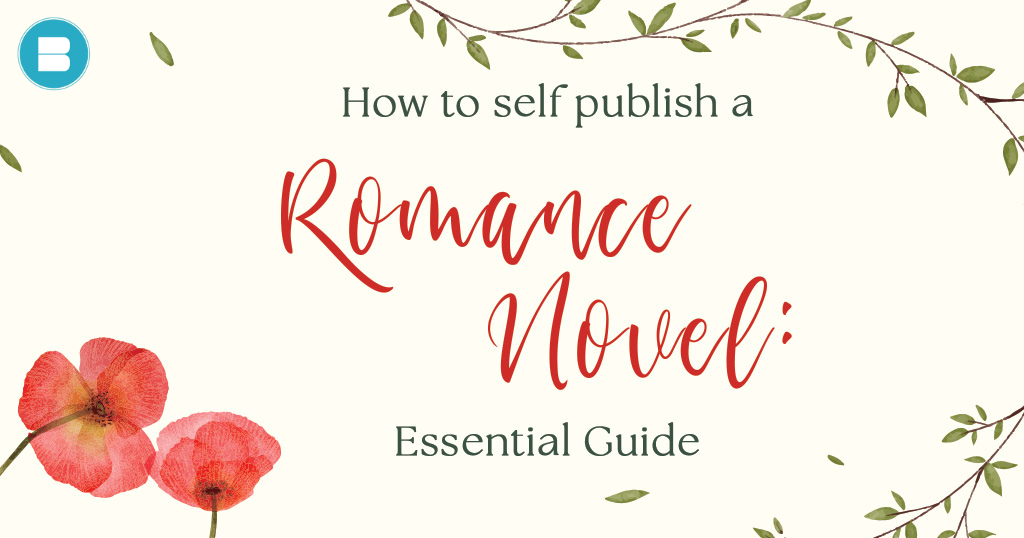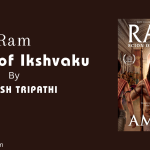The romance genre is extremely broad and inclusive since it embraces a wide range of subgenres and subjects. From contemporary romances set in the present day to historical romances set in various eras, and from paranormal romances with supernatural aspects to romantic suspense loaded with intrigue, the genre has something to suit every reader’s taste and choice. The romance genre’s broad scope is what makes it so essential and enticing to readers all around the world.
The romance genre allows readers to feel a wide spectrum of emotions while exploring many forms of love stories. It depicts the intricacies of human relationships, the ups and downs of romantic partnerships, and the strength of emotional bonds. It gives readers a sense of escape by letting them immerse themselves in intriguing love tales and experience the characters’ excitement, passion, and emotional journeys.
As readers identify with the characters and their circumstances, it fosters empathy, emotional growth, and understanding. Self-discovery, personal growth, overcoming hurdles, and discovering true love are common themes in romance books. Readers might be inspired by these stories to trust in the power of love, to seek meaningful relationships in their own lives, and to embrace vulnerability and emotional closeness.
Furthermore, the romance genre provides a forum for a variety of voices and ideas. It features varied people, relationships, and cultures, offering readers of all backgrounds representation and inclusiveness. This openness is critical to fostering a more varied and welcoming literary scene.
Writing a romance novel in 2023 involves understanding the genre’s conventions, developing compelling characters, crafting a captivating plot, and creating a romantic atmosphere. Here’s a step-by-step guide to help you get started:
- Familiarising Yourself with the Romance Genre
- Choosing Your Subgenre
- Developing Your Characters
- Planning Your Plot
- Build Romantic Tension
- Engaging Dialogue
- Create a Rich Setting
- Balance Romance and Plot
- Edit and Revise
Familiarising Yourself with the Romance Genre:
To write a successful romance novel, it’s essential to become familiar with the genre’s conventions, themes, and tropes. Read widely within the romance genre to understand its various subgenres, such as contemporary romance, historical romance, paranormal romance, or romantic suspense. By immersing yourself in these books, you’ll gain insight into the expectations of romance readers and the trends shaping the market. Pay attention to the common elements found in romance novels, such as strong emotional connections between the main characters, the focus on their romantic relationship, and the presence of obstacles that challenge their love. Understanding these conventions will help you craft a story that resonates with romance readers.
Choosing Your Subgenre:
Once you’ve familiarised yourself with the romance genre, choose a specific subgenre that aligns with your interests and writing style. Each subgenre has its own characteristics and dedicated readership. For example, contemporary romance focuses on modern-day relationships, while historical romance is set in the past. Paranormal romance incorporates elements of fantasy or supernatural beings, while romantic suspense combines romance with elements of mystery or danger. Consider your target readership and the subgenre that best suits your story idea. This choice will shape the setting, themes, and conflicts in your novel.
Developing Your Characters:
Compelling characters are at the heart of any successful romance novel. Take the time to develop well-rounded and relatable main characters that readers can root for. Give them distinct personalities, backgrounds, and motivations that drive their actions and decisions throughout the story. Ensure your main characters have compelling chemistry and an emotional journey that evolves over the course of the novel. Explore their individual growth and how their romantic relationship transforms them. Allow their strengths and flaws to shape their interactions and create believable conflicts.
You may also read: 10 Classic Flat Character Examples in Literature and Film
Planning Your Plot:
A strong and engaging plot is crucial in a romance novel. Outline the major plot points and structure of your story, considering the pacing and the balance between the romantic relationship and external conflicts. Create obstacles that challenge the characters’ love and force them to confront their fears and vulnerabilities. Incorporate both internal and external conflicts to keep readers engaged. Internal conflicts can be emotional barriers, past traumas, or personal insecurities that prevent the characters from fully embracing their love. External conflicts can include misunderstandings, societal expectations, or the interference of other characters. Craft a compelling arc that builds tension, develops the romantic relationship, and leads to a satisfying resolution. This will ensure that readers are invested in the characters’ journey and emotionally satisfied by the end of the novel.
Build Romantic Tension:
One of the key elements of a successful romance novel is the gradual buildup of romantic tension between the main characters. This tension creates anticipation and keeps readers engaged. Develop a slow-burning romance by allowing the relationship to evolve naturally over time. Show moments of emotional vulnerability, shared experiences, and genuine intimacy that deepen the connection between the characters. By building this tension, you’ll create a sense of longing and excitement that will keep readers invested in the romance.
Engaging Dialogue:
Dialogue is a powerful tool in a romance novel. Craft authentic and engaging dialogue that reveals the characters’ personalities, motivations, and emotions. Use dialogue to drive the plot forward, reveal information, and strengthen the romantic bond between the characters. Each character should have a distinct voice and speaking style that reflect their unique traits. Dialogue should also reflect the evolving dynamics of the relationship, showcasing the growing chemistry and emotional connection between the main characters.
Create a Rich Setting:
The setting of your romance novel plays an important role in creating the right atmosphere and enhancing the romance. Create a vivid and immersive world by describing the locations, surroundings, and sensory details. Transport readers into the story by painting a clear picture of the setting and its unique characteristics. Use sensory language to engage the readers’ senses and make them feel like they are experiencing the environment alongside the characters. Whether it’s a bustling city, a quaint small town, or a picturesque countryside, the setting should add depth and richness to the romance.
Balance Romance and Plot:
While romance is the primary focus of your novel, it’s important to have a well-developed plot that goes beyond the romantic relationship. Incorporate subplots and external conflicts that add depth and complexity to the narrative. These elements will provide additional layers of tension and keep readers engaged. Strike a balance between the romantic storyline and the overall plot, ensuring that both are given proper attention and contribute to the overall arc of the story. Avoid excessive melodrama and strive for a satisfying balance between romance and plot development.
You may also read: 10 Elf Name Generators Fantasy Writers Can’t Miss!
Edit and Revise:
Editing and revising are crucial steps in the writing process. Polish your manuscript through multiple rounds of editing, paying attention to grammar, spelling, punctuation, and sentence structure. Ensure consistency in character traits and development, pacing, and plot coherence. Consider seeking feedback from beta readers or hiring a professional editor who specialises in romance novels. Their insights and suggestions can help you refine your manuscript and ensure that your story is compelling, coherent, and ready to captivate readers.
Now that our manuscript is ready to go out in the market, shall we look at couple of steps on how you can transition from a writer to a published author…
- Research:
Research in depth. Whatever is your goal as an author should align with the publishers whether it is self or traditional. You can also raise a query with our publishing house, if you are looking for user-friendly and customised services. Before raising your query or submitting your draft, you can visit BlueRoseONE website to learn about our submission guidelines, publishing packages, and the services they offer. Additionally, familiarise yourself with BlueRose Publishers’ publishing packages. These packages may include various services such as cover design, formatting, distribution, and marketing assistance. Carefully review the details of each package to determine which one aligns with your budget and goals as an author. - Prepare your Manuscript:
Once you are familiar with BlueRose Publishers’ guidelines, prepare your manuscript accordingly. Format your document using a standard font, such as Times New Roman or Arial, with a recommended font size of 12 points. Double spacing is typically preferred for easier readability, and specific margin settings may be specified (e.g., one inch on all sides). Ensure your manuscript is error-free by conducting a thorough proofreading and editing process. Look for spelling mistakes, grammatical errors, and inconsistencies in plot or character development. It’s crucial to present a polished and professional manuscript to BlueRose Publishers. But if, in case, you are not as tech friendly, we provide expert services to help you do the above steps. - Submit your Manuscript:
Follow BlueRose Publishers’ submission guidelines precisely. This typically involves filling out an online submission form, which may require you to provide basic information about yourself, a synopsis of your book, and any writing credentials or previous publishing experience. Attach your manuscript file in the requested format (e.g., PDF or Word document) and any other supporting materials they may require, such as a query letter or author bio. Take care to follow their file naming conventions if specified. Submitting your manuscript in accordance with their guidelines demonstrates your professionalism and respect for their submission process. - Review Publishing Packages:
As you research BlueRose Publishers, carefully review the publishing packages they offer. These packages may vary in terms of the services provided, pricing, and level of support offered. Pay attention to the specific services included in each package, such as cover design, interior formatting, editing, proofreading, distribution, and marketing. Consider your budget, personal goals, and the amount of control you desire over the publishing process. Assess which package best aligns with your needs and aspirations as an author. Take note of any additional charges or royalties associated with each package. Understand the contractual terms and any obligations you may have as an author. By thoroughly reviewing the publishing packages, you can make an informed decision and select the option that suits your requirements and budget while ensuring your romance novel receives the necessary support to reach readers effectively. - Choose a Publishing Package:
When selecting a publishing package from BlueRose Publishers, consider your specific requirements and goals as an author. Assess the package’s pricing, the services offered, and the level of support provided by the publisher. Take into account factors such as editing, cover design, formatting, distribution, and marketing assistance. Consider your budget and choose the package that offers the services you need to ensure your romance novel reaches its intended audience effectively. If you have any questions or need clarification, don’t hesitate to contact BlueRose Publishers for guidance. - Sign a Publishing Agreement:
Review the publishing agreement provided by BlueRose Publishers carefully before signing. Ensure that you understand all the terms and conditions outlined in the agreement. Pay attention to important aspects such as royalty rates, copyright ownership, the duration of the agreement, termination clauses, and any other legal obligations. Seek legal advice if necessary to ensure you fully comprehend the terms. Signing the agreement indicates your commitment to working with BlueRose Publishers and allows them to proceed with the publication process. - Book Production and Design:
Collaborate closely with BlueRose Publishers during the production and design phases of your romance novel. Work together to finalise the cover design, which should effectively convey the genre and attract potential readers. Provide input on the interior layout and formatting, ensuring that the text is easy to read and visually appealing. If you have specific illustrations or images you want to include, discuss them with the publisher to incorporate them seamlessly into the book. Effective and aesthetically pleasing book production and design will enhance the overall reading experience for your audience. - Distribution and Marketing:
BlueRose Publishers will handle the distribution of your romance novel, making it available for purchase through various online platforms and potentially in physical bookstores. Collaborate with the publisher to develop a marketing strategy for your book. This may involve book promotion through social media, advertising campaigns, author website creation, and engagement with potential readers through author interviews, blog tours, or book signings. Discuss marketing opportunities with BlueRose Publishers to ensure your book receives maximum visibility and reaches the right readers. - Publication and Release:
Coordinate with BlueRose Publishers on the publication and release of your romance novel. Set a release date that aligns with your marketing plans and any launch events or promotions you wish to organise. Work closely with the publisher to ensure a smooth and timely release, taking advantage of pre-order options if available. BlueRose Publishers will make your book available for purchase, allowing readers to access and enjoy your romance novel.
In conclusion, writing and publishing a romance novel in 2023 is an exciting endeavor that requires careful planning, creative storytelling, and an understanding of the genre’s conventions. By following the steps outlined in this guide, you can embark on a fulfilling journey to bring your romantic story to life and share it with readers around the world.
Ultimately, the joy of writing and sharing a romance novel lies in the connection you create with readers, the emotions you evoke, and the impact your story has on their lives. Whether you choose to pursue traditional publishing or self-publishing, the important thing is to stay true to your vision, believe in your story, and never give up on your dreams.
So, take a deep breath, gather your ideas, and begin weaving a tale of love, passion, and unforgettable characters. The world is waiting to be swept off its feet by your romance novel in 2023. Happy writing and publishing!
Publish your book for free with BlueRoseONE and become a bestselling author. Don’t let your dream of becoming an author fade away, grab the opportunity now and publish your book – be it fiction, non fiction, poetry or more.















